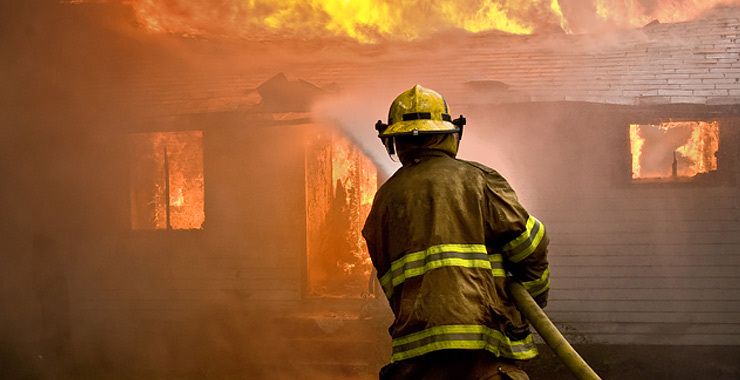
The thought of all your belongings going up in flames is a frightening one indeed, but every year, that's exactly what happens to hundreds of thousands of Americans. In 2018 alone, there were more than 379,000 house fires, according to the U.S. Fire Administration (USFA).
Below are some common causes of residential fires in the United States along with some helpful tips on how to reduce your risk. Avoid being another statistic by following this home fire safety checklist.
1. Cooking
The most trafficked area in the house is the kitchen, which is also the one place where fire danger is most likely to be. In fact, the USFA estimates that in 2018 cooking was the leading cause of home fires, with approximately 50% of residential building fires starting in the kitchen.
If you are using a Crock-Pot, air fryer, or any other countertop cooking appliance, make sure that outlets appear normal and avoid plugging in cords that are damaged, whether they're frayed, loose, or bare. If any of the cords are damaged, or if any of the hardware isn't secure, do not use it until it’s repaired. Additionally, it is imperative that only one heat-producing appliance (microwave, coffee machine, space heater, etc.) be plugged into the electrical outlet.
While the kitchen is usually bustling with family and friends, accidents happen most when the room is vacant. Fire officials recommend always having someone in the vicinity when food is cooking.
2. Heating
When the temperature drops and harsh winter sets in, it's time to dial up the heat in the house. Keeping warm, however, can occasionally lead to accidents, sometimes due to improper maintenance. For example, failure to clean creosote buildup in chimneys could result in heating fires. Creosote is a black, tar-like substance that attaches to the interior of chimneys over time, especially when homeowners use their fireplaces as a primary source of heat.
It’s recommended that homeowners have their chimneys serviced on an annual basis by having a qualified professional clean the highly flammable creosote buildup. It's also important to keep items that can catch fire at least 3 feet away from any heat source, portable or fixed. When using a space heater, it is critical to turn it off when leaving the room or going to bed for the evening. An unattended space heater has the capability to cause faulty wiring to overheat and combust.
3. Cigarette smoking
Kicking the habit once and for all reduces the risk of residential fires, because smoking is one of the leading causes of home fire tragedies. In 2018, an estimated 12% of all fatal residential building fires stemmed from careless cigarette usage. Fire officials recommend smoking outside the home to avoid exposing various items in your home to a smoldering cigarette and hot ashes. Before walking away from a previously extinguished cigarette, ensure it is all the way out and dispose of the remains in an ashtray or bucket with sand.
4. Candles
There's nothing like the "welcome home" smell of a scented candle, so inviting that it can often lead homeowners to forget that one is lit. Nationwide, 21 home candle fires are reported to fire officials on average per day.
Homeowners should never leave a room unattended where a candle is burning, especially if there are curious young children or energetic pets present. Candles should also be placed in sturdy holders to reduce the risk of them tipping over and not placed close to anything combustible. Or you may simply choose the equally as effective alternative, flameless candles. They smell just like the real deal without the risk.
5. Safety Equipment
Taking the right fire safety precautions can go a long way. Unfortunately, sometimes even the best laid plans fall short. If disaster does strike, here are some proven fire safety essentials all homeowners should use.
Smoke alarms are an indispensable safety feature that homeowners often take for granted. However, the Nation Fire Protection Association reports approximately 3 out of 5 home fire deaths were the result of faulty or absent smoke alarms. As such, they should be properly tested each month and, even if still functioning, replaced with a new one every 10 years.
If a manageable fire does occur in a home, a reliable fire extinguisher can make all the difference. A majority of homeowners may find themselves wondering how often home fire extinguishers should be replaced. The short answer is anywhere between 5 to 15 years, dependent on a variety of factors. Some tell-tale signs that an extinguisher should be replaced or serviced are a cracked hose or nozzle, a missing or unsealed locking pin, and a low pressure gauge.
Want to learn more on how to make your home fire safe? For more information and resources, be sure to consult the National Fire Protection Association, as well as the U.S. Fire Administration.
Source: Selective.com
